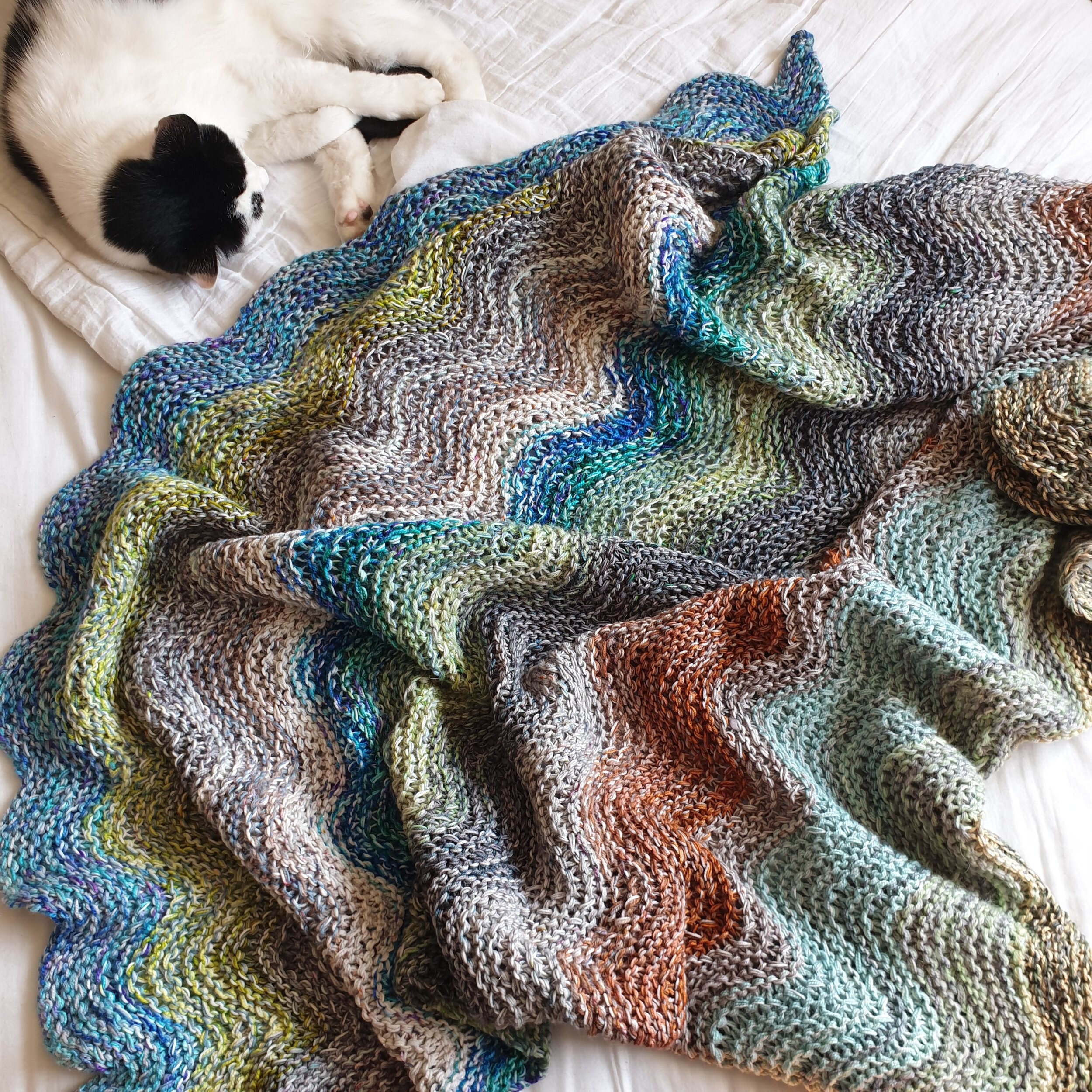Some time ago, despairing of a never-ending mountain of leftover sock yarn, I knit a mahoosive ripple blanket holding 3 strands of 4ply together.
The resulting blanket is now a much loved snuggly staple in our house and usually lives casually thrown over the back of the sofa for anyone who needs it.
Knitted on 7mm needles and using over 4000m of yarn it knitted up surprisingly quickly and also made a pleasing dent in my stash.
Knitting with yarn held double or triple offers many advantages, not least the size reduction to your stash. Combining yarns of different colours, textures and even weights can produce some really beautiful fabrics that just wouldn’t be possible with just one yarn. And even better, they will be totally unique to you.
I love the marled effect you can get by combining colours - indeed I think that’s the favourite thing about this blanket of mine. And even now I can spend many a happy minute studying it and remembering the original yarns that went into it.
Some Tips:
Swatching - yes I know - but even a little swatch will be helpful in making sure that you get a fabric you like. Technically speaking 2 4ply yarns held together should yield a DK weight but I know that in my hands at least, I get more of a worsted weight gauge. The way the yarns are spun and they way they wrap around each other during the knitting can all affect the final result. If you are planning a marl or a fade it’s always a good idea to do a little swatch first just to check that the colours play nicely together.
Winding - this is a personal one. Some people prefer to knit with the two strands coming from separate balls, some prefer to wind it into a single large ball before starting. This probably comes down to personal preference and how much you dislike tangling. If I was knitting from 2 or 3 balls I’d probably keep them separate (it also makes it easier to swap in new colours) but if I was knitting from 5 I’d have to wind it into a monster ball first.
Joining - again this is down to personal preference. With my Garter Ripple Squish blanket I used the clasped weft join to add in new colours as I wanted to and just weaved the ends in later. There is also the option to embrace the ends and go for a fringed effect if you are using up lots of odds and ends.
Ravelry - did you know that Ravelry now gives you the option to search for projects with multiple yarn strands. If you look down the search options on the left hand side you’ll see a box for ‘yarn held together’ and various options under that. This is a relatively new addition but I’ve found it to be really helpful.
As with so much in knitting, when it comes to knitting with yarn held doubled it really does come down to trial and error and finding something that pleases you - it’s great to look at other projects for inspiration but ultimately you are free to go your own way and create something truly unique.

